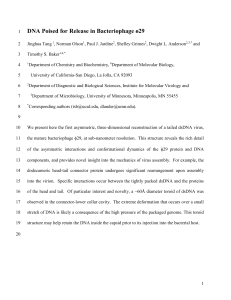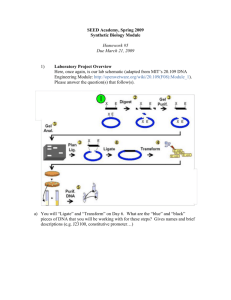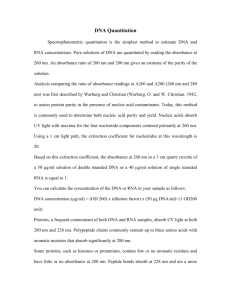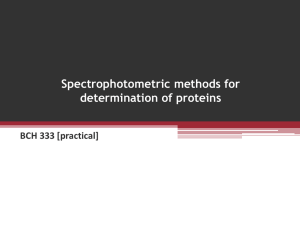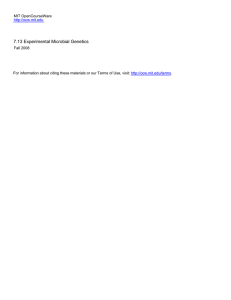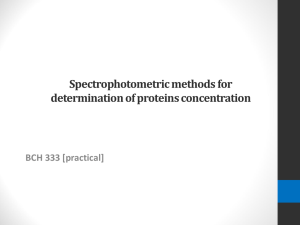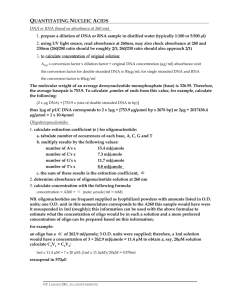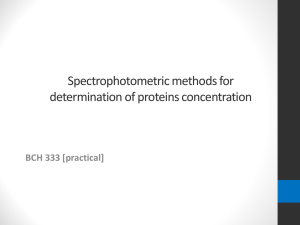Restriction analysis of Plasmid DNA
advertisement
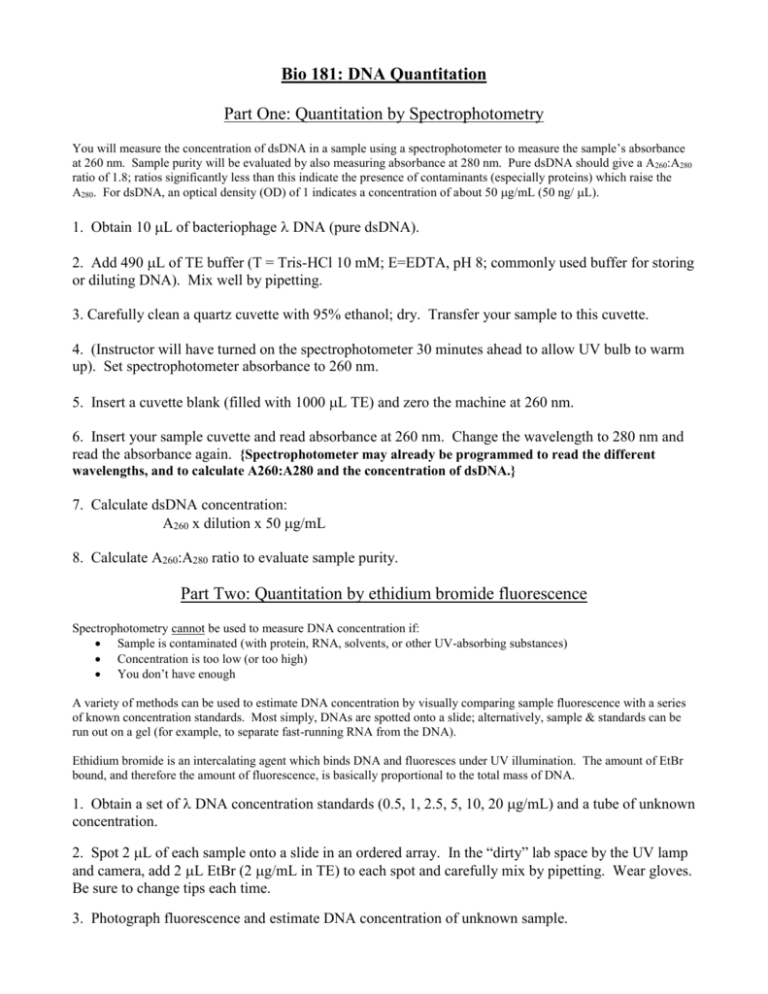
Bio 181: DNA Quantitation
Part One: Quantitation by Spectrophotometry
You will measure the concentration of dsDNA in a sample using a spectrophotometer to measure the sample’s absorbance
at 260 nm. Sample purity will be evaluated by also measuring absorbance at 280 nm. Pure dsDNA should give a A260:A280
ratio of 1.8; ratios significantly less than this indicate the presence of contaminants (especially proteins) which raise the
A280. For dsDNA, an optical density (OD) of 1 indicates a concentration of about 50 g/mL (50 ng/L).
1. Obtain 10 L of bacteriophage DNA (pure dsDNA).
2. Add 490 L of TE buffer (T = Tris-HCl 10 mM; E=EDTA, pH 8; commonly used buffer for storing
or diluting DNA). Mix well by pipetting.
3. Carefully clean a quartz cuvette with 95% ethanol; dry. Transfer your sample to this cuvette.
4. (Instructor will have turned on the spectrophotometer 30 minutes ahead to allow UV bulb to warm
up). Set spectrophotometer absorbance to 260 nm.
5. Insert a cuvette blank (filled with 1000 L TE) and zero the machine at 260 nm.
6. Insert your sample cuvette and read absorbance at 260 nm. Change the wavelength to 280 nm and
read the absorbance again. {Spectrophotometer may already be programmed to read the different
wavelengths, and to calculate A260:A280 and the concentration of dsDNA.}
7. Calculate dsDNA concentration:
A260 x dilution x 50 g/mL
8. Calculate A260:A280 ratio to evaluate sample purity.
Part Two: Quantitation by ethidium bromide fluorescence
Spectrophotometry cannot be used to measure DNA concentration if:
Sample is contaminated (with protein, RNA, solvents, or other UV-absorbing substances)
Concentration is too low (or too high)
You don’t have enough
A variety of methods can be used to estimate DNA concentration by visually comparing sample fluorescence with a series
of known concentration standards. Most simply, DNAs are spotted onto a slide; alternatively, sample & standards can be
run out on a gel (for example, to separate fast-running RNA from the DNA).
Ethidium bromide is an intercalating agent which binds DNA and fluoresces under UV illumination. The amount of EtBr
bound, and therefore the amount of fluorescence, is basically proportional to the total mass of DNA.
1. Obtain a set of DNA concentration standards (0.5, 1, 2.5, 5, 10, 20 g/mL) and a tube of unknown
concentration.
2. Spot 2 L of each sample onto a slide in an ordered array. In the “dirty” lab space by the UV lamp
and camera, add 2 L EtBr (2 g/mL in TE) to each spot and carefully mix by pipetting. Wear gloves.
Be sure to change tips each time.
3. Photograph fluorescence and estimate DNA concentration of unknown sample.
